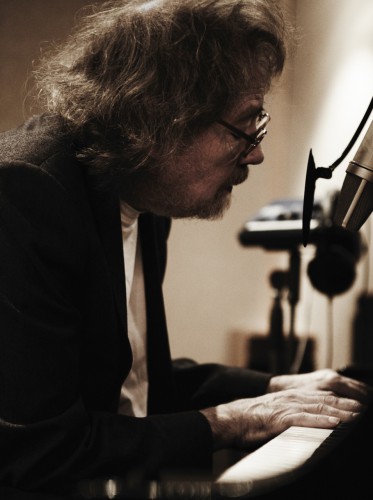
Here’s an Ash Wednesday appropriate portion of A Mess of Help, taken from the final chapter, “Sing Mockingbird Sing: The Alpha and Omega of Annotated Playlists”. This is track 18 of 20. You can listen to the entire playlist here.
 I am sure I’m not the only one whose ears perked up during the scene in I Am Trying to Break Your Heart, the now-classic documentary about the band Wilco, where lead singer Jeff Tweedy plays an unknown song imploring the listener to “Be Not So Fearful”. Plaintive and disarming and, most of all, comforting, the tune employs biblical language without slipping into religious territory. Turns out the song belonged to an obscure English songwriter named Bill Fay, whose two records had been out of print for decades.
I am sure I’m not the only one whose ears perked up during the scene in I Am Trying to Break Your Heart, the now-classic documentary about the band Wilco, where lead singer Jeff Tweedy plays an unknown song imploring the listener to “Be Not So Fearful”. Plaintive and disarming and, most of all, comforting, the tune employs biblical language without slipping into religious territory. Turns out the song belonged to an obscure English songwriter named Bill Fay, whose two records had been out of print for decades.
Cut to 2012 and the announcement that an American producer had tracked the 69 year-old Fay down and corralled him into the studio for the first time since 1978. Fay had spent the intervening years in janitorial purgatory, working a series of thankless jobs, but he had never ceased writing songs. As he put it in an interview, “I didn’t leave the music business. The music business left me.”
The sessions in question produced what can only be called a masterpiece. One part poetic world-weariness, one part understated beauty, one part hard-won compassion, and two parts straight-up Calvary, records like Life Is People do not come along very often, if ever. So uncontrived and graceful, it might be what “authentic” saintliness sounds like. Think a septuagenarian British Jeff Tweedy covering Nick Cave (with a little Leonard Cohen thrown in).
His previous release, 1971’s Time of the Last Persecution, mined a fiercely eschatological vein, pitting Fay’s visions of doom and Revelation against angular, jazz-inflected arrangements. It had ‘cult record’ written all over it. Life Is People is no less religious, but it finds the singer in a considerably more serene state of mind. The urgency (and paranoia) of youth has been replaced by the kind of humble faith that only years of open-hearted living can engender. “This World” still pains him, but he is looking forward to “The Healing Day”.
We take it for granted how much popular music is made by young people. Certainly this very playlist is dominated by recordings made by pre-middle-age artists. There even persists a myth out there that creativity itself is the domain of those under 40. When Fay sings, we catch a glimpse not only of how mistaken such a view is, but also of what we miss out on when more mature voices are relegated to the sidelines. We lose canyons of wisdom, both deep and wide, especially when it comes to questions of eternal significance.
Indeed, in a setting where the decline of religion among the younger generation is met with such palpable handwringing—the rise of twenty-something ‘religious nones’ being the most recent form of such hysteria—Fay provides a stirring reminder: people have always grown more religious with age, not because they fear death so much as because they have stopped venerating life on its own terms. That is, the eyes of faith open more easily when the years have seen through our delusions about ourselves and the world.
Just listen to the soft-spoken but unmistakable authority with which Fay approaches the Crucifixion in the opening, “There Is a Valley”. Only an aged voice like his, in which you can actually hear the compassion (and the tragedies that birthed it), can give the subject matter the gravitas it deserves. “Every city bar brawl, every fistfight / Every bullet from a gun / Is written upon the palms of the holy one”, he sings, and you believe him. You want to hear more, in fact.
Life appears to have stripped away Fay’s penultimate concerns and illusions—all that’s left is the unadorned centrality of the event itself, and what it represents for a world full of failed Christians and forgotten musicians: hope in a resurrection that is more than just artistic.

COMMENTS
4 responses to “There Is A Valley: Old Age, Creativity, and the Return of Bill Fay”
Leave a Reply













This touching post concerning Bill Fay
put one in mind of Geoff Goddard (d. 2000), who,
after his great day in the sun with Joe Meek, was content to be
a dishwasher in a university cafeteria for many years.
Goddard simply “disappeared”, a powerful thing to do, and stick to. He did.
He had often written God into his songs –like Joe Meek, he was a believer
and had grown up in the C of E — and when you hear them now, they can be almost unbearably
touching. For example, “I Beg to Heaven” (https://www.youtube.com/watch?v=khI0oXZ4SDw),
not to mention “For Eternity” (https://www.youtube.com/watch?v=L2KXPPKQyE4) and “Seventeen Come Sunday” (https://www.youtube.com/watch?v=t5jnRAshn2w).
I don’t think you could argue that Goddard’s songs are profound, at least in the way Bill Fay’s are. Then again, maybe you could.
Fortunately, he believed in flying saucers, which makes him an Icon of Love in my own
personal pantheon.